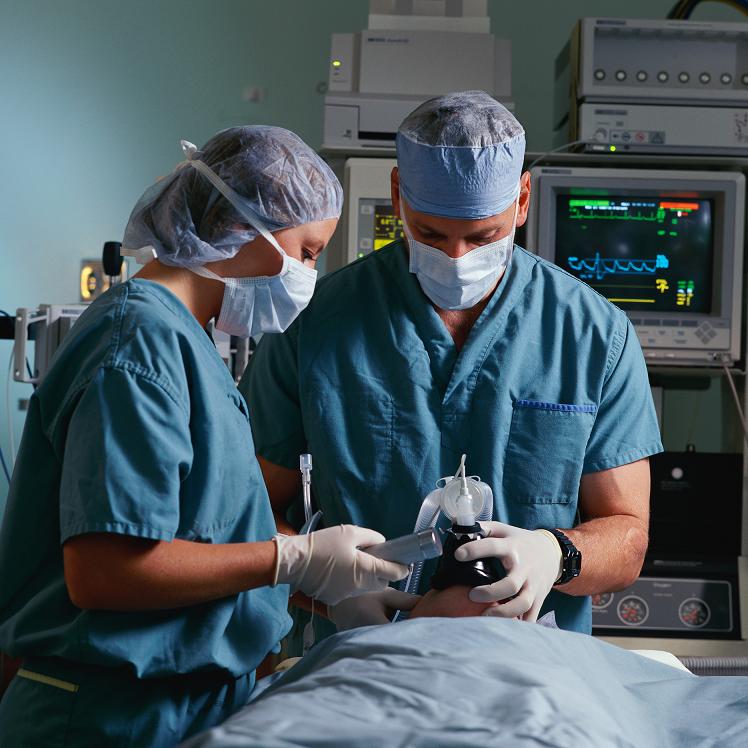A Day in the Life of an Anesthesiologist
July 26, 2024
Anesthesia is an indispensable element of modern medical practice, playing a pivotal role in facilitating a wide range of surgical and diagnostic procedures. Despite its widespread use, misconceptions about anesthesia persist, often leading to unnecessary anxiety among patients. This discussion aims to address and clarify some of the most prevalent myths surrounding anesthesia, emphasizing its safety, versatility, and adaptability to individual patient needs. By debunking these myths, we can foster a more informed understanding of anesthesia and its critical role in healthcare delivery.
Myth #1: Anesthesia is inherently dangerous and potentially lethal.
Reality: While anesthesia, like any medical intervention, carries inherent risks, it is overwhelmingly safe when administered by qualified and experienced professionals. The likelihood of severe complications is exceedingly low, thanks to significant advancements in anesthetic pharmacology, monitoring technologies, and standardized safety protocols. Most adverse outcomes are associated with pre-existing medical conditions rather than the anesthesia itself. Rigorous preoperative assessments and tailored anesthetic plans further mitigate risks, ensuring patient safety.
Myth #2: Anesthesia failure can result in intraoperative awareness.
Reality: The phenomenon of anesthesia awareness, wherein a patient regains consciousness during surgery, is exceptionally rare. Modern anesthesia practice employs sophisticated monitoring systems, including brain activity monitors and vital sign tracking, to maintain optimal anesthetic depth. Anesthesiologists are trained to continuously assess and adjust anesthesia levels, ensuring that patients remain unconscious and pain-free throughout the procedure. These measures make anesthesia awareness an unlikely occurrence.
Myth #3: Anesthesia is exclusively reserved for major surgical procedures.
Reality: Anesthesia is utilized across a broad spectrum of medical interventions, ranging from major surgeries to minor outpatient procedures and diagnostic tests. The type of anesthesia administered—whether general, regional, or local—is carefully selected based on the nature of the procedure and the patient’s specific needs. This flexibility allows anesthesia to be safely and effectively applied in diverse clinical contexts, enhancing patient comfort and procedural success.
Myth #4: General anesthesia invariably leads to postoperative nausea and vomiting (PONV).
Reality: Although PONV is a recognized side effect of general anesthesia, it does not universally affect all patients. Anesthesiologists employ evidence-based strategies to reduce the incidence of PONV, including the prophylactic administration of antiemetic medications and the selection of anesthetic agents with lower emetogenic potential. By tailoring anesthesia plans to individual risk factors, clinicians can significantly minimize the likelihood of PONV, improving the postoperative experience for patients.
Myth #5: Patients with pre-existing medical conditions are ineligible for anesthesia.
Reality: Anesthesia can be safely administered to patients with pre-existing conditions, provided that their medical history is thoroughly evaluated and integrated into the anesthetic plan. Anesthesiologists are trained to manage complex cases, adapting their approach to accommodate comorbidities such as cardiovascular disease, diabetes, or respiratory disorders. Through meticulous preoperative assessment and personalized care, anesthesia can be delivered safely, even to high-risk patients.
In conclusion, anesthesia is a highly refined and adaptable medical tool that prioritizes patient safety and procedural efficacy. By dispelling common myths and fostering a deeper understanding of its principles and practices, healthcare providers can reassure patients and optimize outcomes. As advancements in anesthesia continue to evolve, its role in enhancing the quality and accessibility of medical care remains paramount. For CEOs and healthcare leaders, investing in ongoing education, cutting-edge technology, and robust safety protocols will further solidify anesthesia’s position as a cornerstone of modern medicine.
